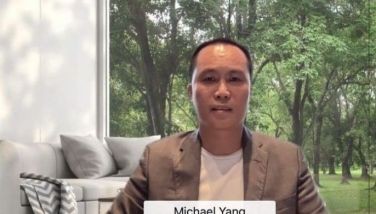Key to higher rice, corn yields in upland areas
January 28, 2007 | 12:00am
Crop diversification and contouring plus lime application and fertilization based on soil analysis may very be the key to higher rice and corn yields in upland areas, as shown by results of a PhilRice (Philippine Rice Research Institute) study in an upland community in Ilagan, Isabela.
In an adaptation trial in Brgy. Sta. Victoria, Ilagan, the income derived from crop diversification by the farmer cooperator increased by P25,000 a hectare compared to a single crop of low-yielding rice, which is normally planted by farmers in the community.
The cooperator planted the upland rice variety NSIC Rc9 and the glutinous corn variety IES Glut # 4 as his main crops, as well as pineapple, banana, and Napier grass as hedgerows. He also applied organic and inorganic fertilizers on all his crops following an integrated nutrient management scheme, knowing fully well that organic fertilizer is not enough to produce a decent yield.
In Sta. Victoria, the cropping pattern in the hilly uplands is corn followed by another crop of corn. On the other hand, the cropping pattern in the plain uplands is either upland rice followed by a follow period or upland rice followed by corn. The area is drought-prone with a low rainfall of 143 mm a year.
PhilRice researchers led by Myrna D. Malabayabas reported that although the farmer-cooperator harvested only 2.5 tons a hectare (t/ha) of glutinous corn, he obtained a net income of P7,490 a hectare with 36-percent return on investment.
The farmer also harvested 2.4 t/ha of upland rice, which was 1,460 kg higher than the yield of the local variety Fertiliza. He obtained a net income of P2,700 a hectare.
The farmer earned an additional P13,000 from lakatan banana and pineapple grown along the hedgerows.
On the whole, the farmer-cooperator benefited from the newly introduced technology even as he incurred a higher cost of production, which was primarily due to the application of lime and inorganic fertilizer. Normally, lime and inorganic fertilizer application is not done by other farmers.
Lime and organic fertilizer are needed as soil amendments to make the farm more productive and sustainable in the long term.
Furthermore, the hedgerows in contour farming aid in soil conservation by preventing soil erosion. The hedgerows are also sources of additional food and income for the family. In addition, the Napier grass comes handy as feed for ruminants like cattle, carabaos and goats. – Sosimo Ma. Pablico
In an adaptation trial in Brgy. Sta. Victoria, Ilagan, the income derived from crop diversification by the farmer cooperator increased by P25,000 a hectare compared to a single crop of low-yielding rice, which is normally planted by farmers in the community.
The cooperator planted the upland rice variety NSIC Rc9 and the glutinous corn variety IES Glut # 4 as his main crops, as well as pineapple, banana, and Napier grass as hedgerows. He also applied organic and inorganic fertilizers on all his crops following an integrated nutrient management scheme, knowing fully well that organic fertilizer is not enough to produce a decent yield.
In Sta. Victoria, the cropping pattern in the hilly uplands is corn followed by another crop of corn. On the other hand, the cropping pattern in the plain uplands is either upland rice followed by a follow period or upland rice followed by corn. The area is drought-prone with a low rainfall of 143 mm a year.
PhilRice researchers led by Myrna D. Malabayabas reported that although the farmer-cooperator harvested only 2.5 tons a hectare (t/ha) of glutinous corn, he obtained a net income of P7,490 a hectare with 36-percent return on investment.
The farmer also harvested 2.4 t/ha of upland rice, which was 1,460 kg higher than the yield of the local variety Fertiliza. He obtained a net income of P2,700 a hectare.
The farmer earned an additional P13,000 from lakatan banana and pineapple grown along the hedgerows.
On the whole, the farmer-cooperator benefited from the newly introduced technology even as he incurred a higher cost of production, which was primarily due to the application of lime and inorganic fertilizer. Normally, lime and inorganic fertilizer application is not done by other farmers.
Lime and organic fertilizer are needed as soil amendments to make the farm more productive and sustainable in the long term.
Furthermore, the hedgerows in contour farming aid in soil conservation by preventing soil erosion. The hedgerows are also sources of additional food and income for the family. In addition, the Napier grass comes handy as feed for ruminants like cattle, carabaos and goats. – Sosimo Ma. Pablico
BrandSpace Articles
<
>
- Latest
Latest
Latest
April 10, 2024 - 5:12pm
By Ian Laqui | April 10, 2024 - 5:12pm
March 4, 2024 - 3:32pm
By Ian Laqui | March 4, 2024 - 3:32pm
March 4, 2024 - 2:12pm
By Kristine Daguno-Bersamina | March 4, 2024 - 2:12pm
February 17, 2024 - 2:31pm
February 17, 2024 - 2:31pm
February 13, 2024 - 7:24pm
By Gaea Katreena Cabico | February 13, 2024 - 7:24pm
Recommended

























